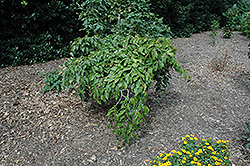Fri & Sat 8am - 8pm
Sun 8am - 7pm
Anytown, USA 12345
fax: 261.787.0463
e-mail: info@successgc.com


Plant Finder

White Lightning Weeping Beech
Fagus grandifolia 'White Lightning'
Height: 5 feet
Spread: 6 feet
Sunlight:
![]()
Hardiness Zone: 4b
Other Names: American Beech
Description:
An attractive dwarf selection of our native beech with fine, spreading white branches; a perfect garden or landscape accent for smaller spaces
Ornamental Features
White Lightning Weeping Beech is primarily valued in the landscape or garden for its highly ornamental weeping form. It has dark green deciduous foliage. The serrated pointy leaves turn an outstanding harvest gold in the fall. The smooth white bark is extremely showy and adds significant winter interest.
Landscape Attributes
White Lightning Weeping Beech is a multi-stemmed deciduous shrub with a rounded form and gracefully weeping branches. Its average texture blends into the landscape, but can be balanced by one or two finer or coarser trees or shrubs for an effective composition.
This is a relatively low maintenance shrub, and is best pruned in late winter once the threat of extreme cold has passed. Deer don't particularly care for this plant and will usually leave it alone in favor of tastier treats. It has no significant negative characteristics.
White Lightning Weeping Beech is recommended for the following landscape applications;
- Accent
- General Garden Use
Planting & Growing
White Lightning Weeping Beech will grow to be about 5 feet tall at maturity, with a spread of 6 feet. It has a low canopy with a typical clearance of 2 feet from the ground, and is suitable for planting under power lines. It grows at a slow rate, and under ideal conditions can be expected to live for 60 years or more.
This shrub should only be grown in full sunlight. It requires an evenly moist well-drained soil for optimal growth, but will die in standing water. It is not particular as to soil pH, but grows best in rich soils. It is quite intolerant of urban pollution, therefore inner city or urban streetside plantings are best avoided, and will benefit from being planted in a relatively sheltered location. This is a selection of a native North American species.
